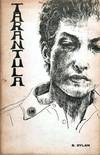

Atlas of old Tehran.= Atlas-e Tehran-e qadîm. Introduction by Cyrus Alai.
by REZA SHIRAZIAN
- New
- Hardcover
- Condition
- New
- ISBN 10
- 6002970479
- ISBN 13
- 9786002970473
- Seller
-
Istanbul, Turkey
Payment Methods Accepted
About This Item
Reviews
(Log in or Create an Account first!)
Details
- Bookseller
- Khalkedon Rare Books, IOBA, ESA
(TR)
- Bookseller's Inventory #
- 052787
- Title
- Atlas of old Tehran.= Atlas-e Tehran-e qadîm. Introduction by Cyrus Alai.
- Author
- REZA SHIRAZIAN
- Format/Binding
- Hardcover
- Book Condition
- New
- Quantity Available
- 1
- ISBN 10
- 6002970479
- ISBN 13
- 9786002970473
- Publisher
- Intishârât-i Dastân., [Sh.: 1394]
- Place of Publication
- Tehran
- Date Published
- 2016
- Size
- Folio - over 12 - 15" tall
- Keywords
- COVID19 MAPS MAP OF THE MAPPING CARTOGRAPHY GEOGRAPHY CARTE ATLAS Reference City Guide Iran Persia Iranian Capital of the Tehran Tahran Teheran Planning Collection History -- Pictorial works. Teheran Tihran (Iran) -- Historical geography. Tehran (Iran) --
- Bookseller catalogs
- Maps & Atlases & Guides;
Terms of Sale
Khalkedon Rare Books, IOBA, ESA
All items are offered subject to prior sale.
Prices are in US Dollars.
All items are guaranteed to be as described.
Purchases may be returned for any reason within ten days of receipt for a full refund or credit, but please notify us of any returns in advance. Returns should be adequately packed and insured.
Shipping and Insurance are free on all purchases.
Contact by email and phone, inquiries are welcome. Prompt attention is paid to phone calls and emails.
We're happy to accommodate institutional billing procedures. Please send your order with purchase order number if applicable.
Ownership of goods does not pass to the purchaser until the price has been paid in full. General conditions of sale are those laid down in the IOBA Code of Ethics, which can be viewed at https://www.ioba.org/code-of-ethics
Bank/wire transfer and by secure website.
About the Seller
Khalkedon Rare Books, IOBA, ESA
About Khalkedon Rare Books, IOBA, ESA
Glossary
Some terminology that may be used in this description includes:


